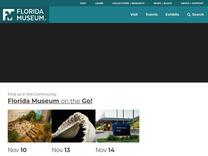Research Projects – The Kawahara Lab https://www.floridamuseum.ufl.edu/kawahara-lab/research/projects/
Many projects take place in the lab with collaborators from other institutions. Some of these are listed below. For post-docs, students and volunteers interested in joining the lab, see the lab’s research opportunities. Anti-bat ultrasound production and sonar deflection With more than 160,000 spe
Japan Madagascar Malaysia Mozambique North & Central Florida Peru Taiwan Washington

